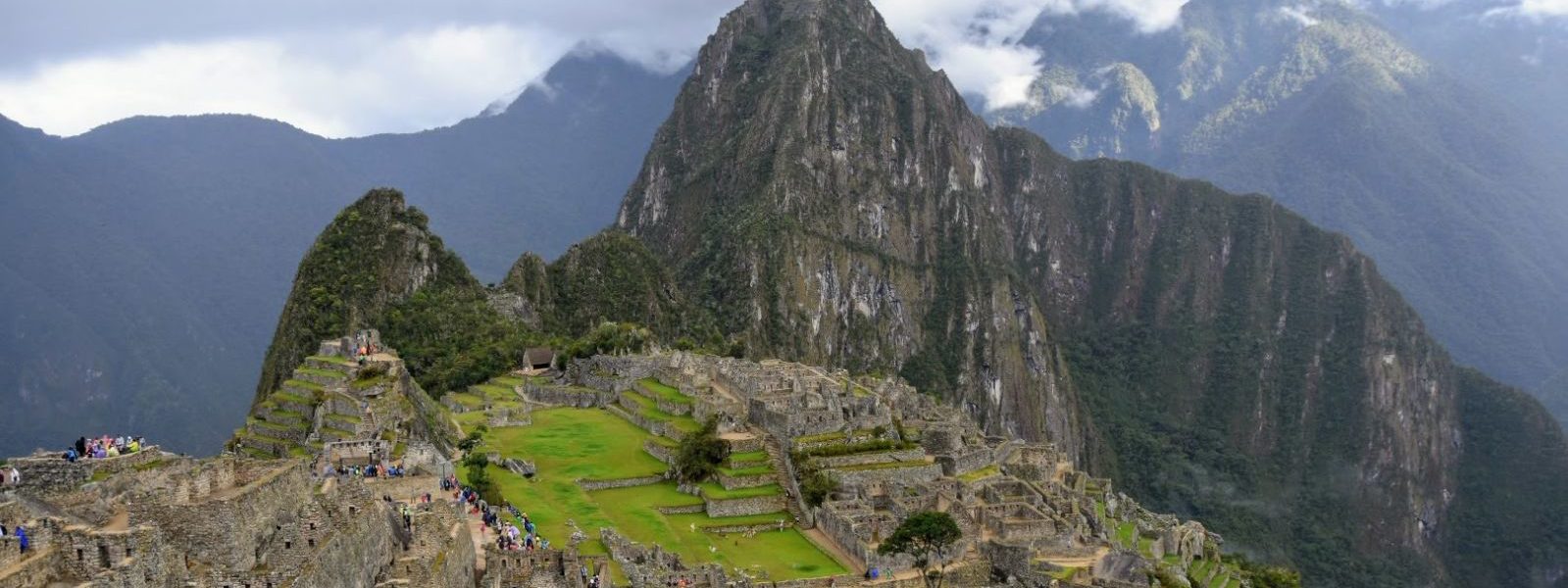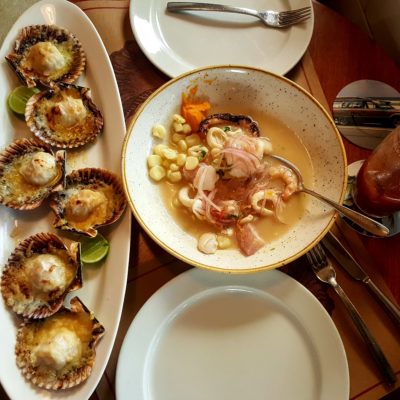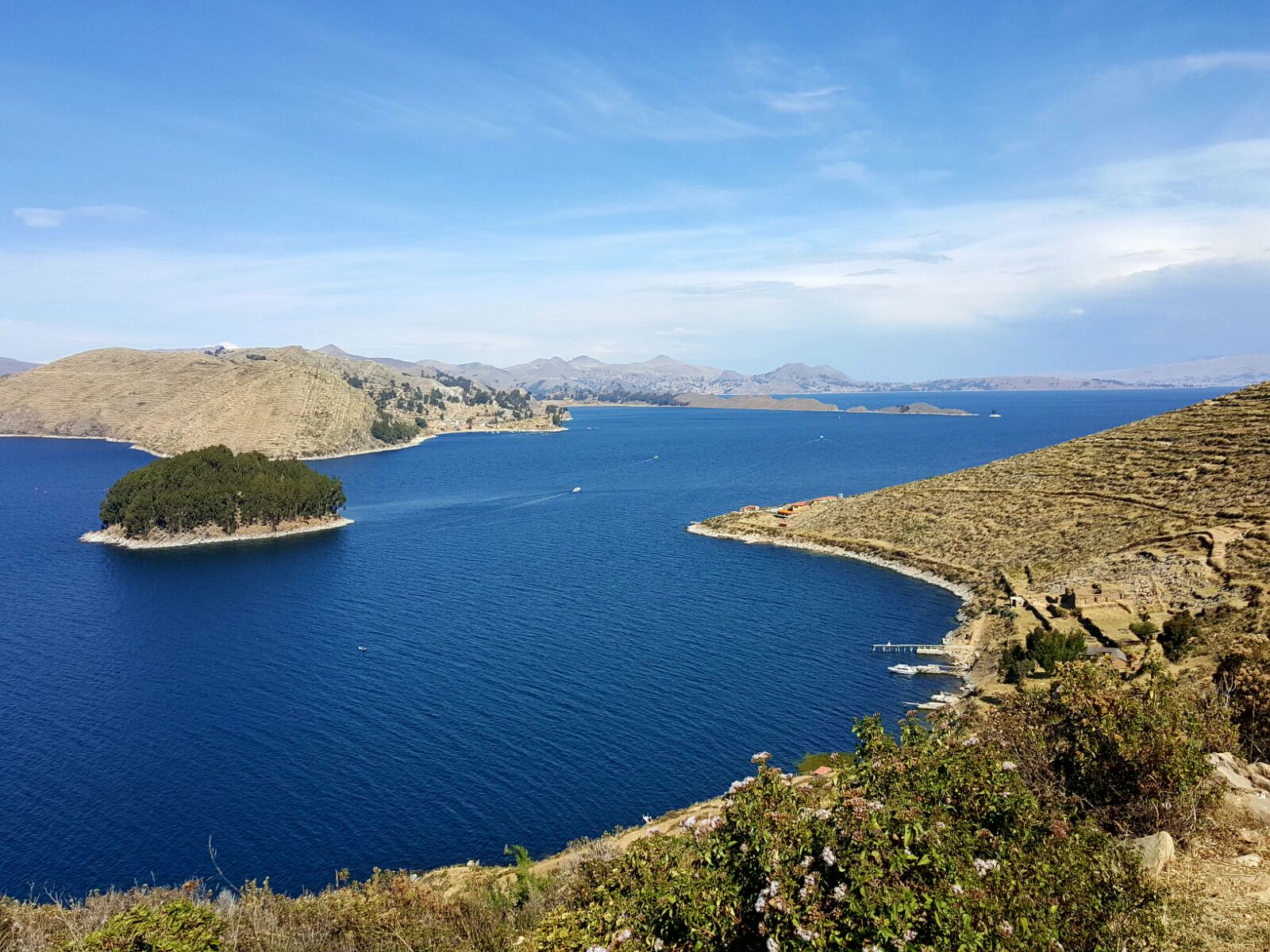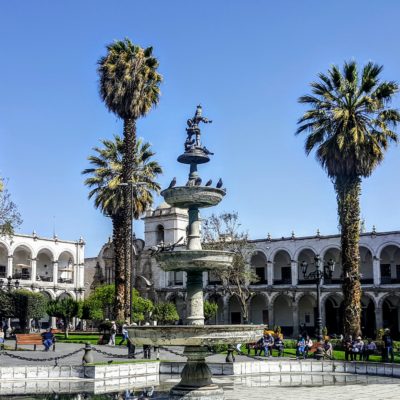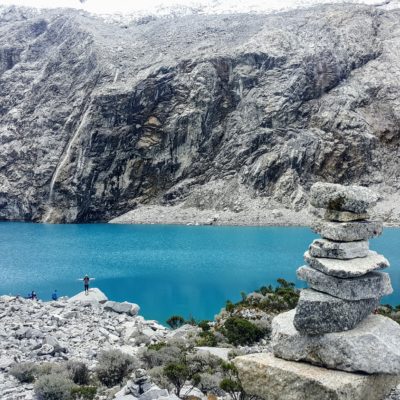Cusco was once the capital of the Inca Empire. Now it’s the gateway to Machu Picchu and a busy tourist mecca that draws in crowds from around the world. We spent a couple of weeks exploring the city, hiking the classic Inca Trail to Machu Picchu and trekking to the colourful rainbow mountain.
Hiking around Cusco
There are few places in the world that offer one day hikes as rewarding as Rainbow Mountain. This hike is not for the unacclimitised and took us to our highest ever altitude at at a little over 5,000m. The air is pretty thin up there and it’s not uncommon for people to really struggle with altitude sickness. Fortunately we’ve spent almost as much time above 4,000m as we have below in the last month so had no issues. Plenty of people cheat (OK that’s a little harsh) and get a horse up to the top otherwise it takes a couple of hours of solid uphill hiking.
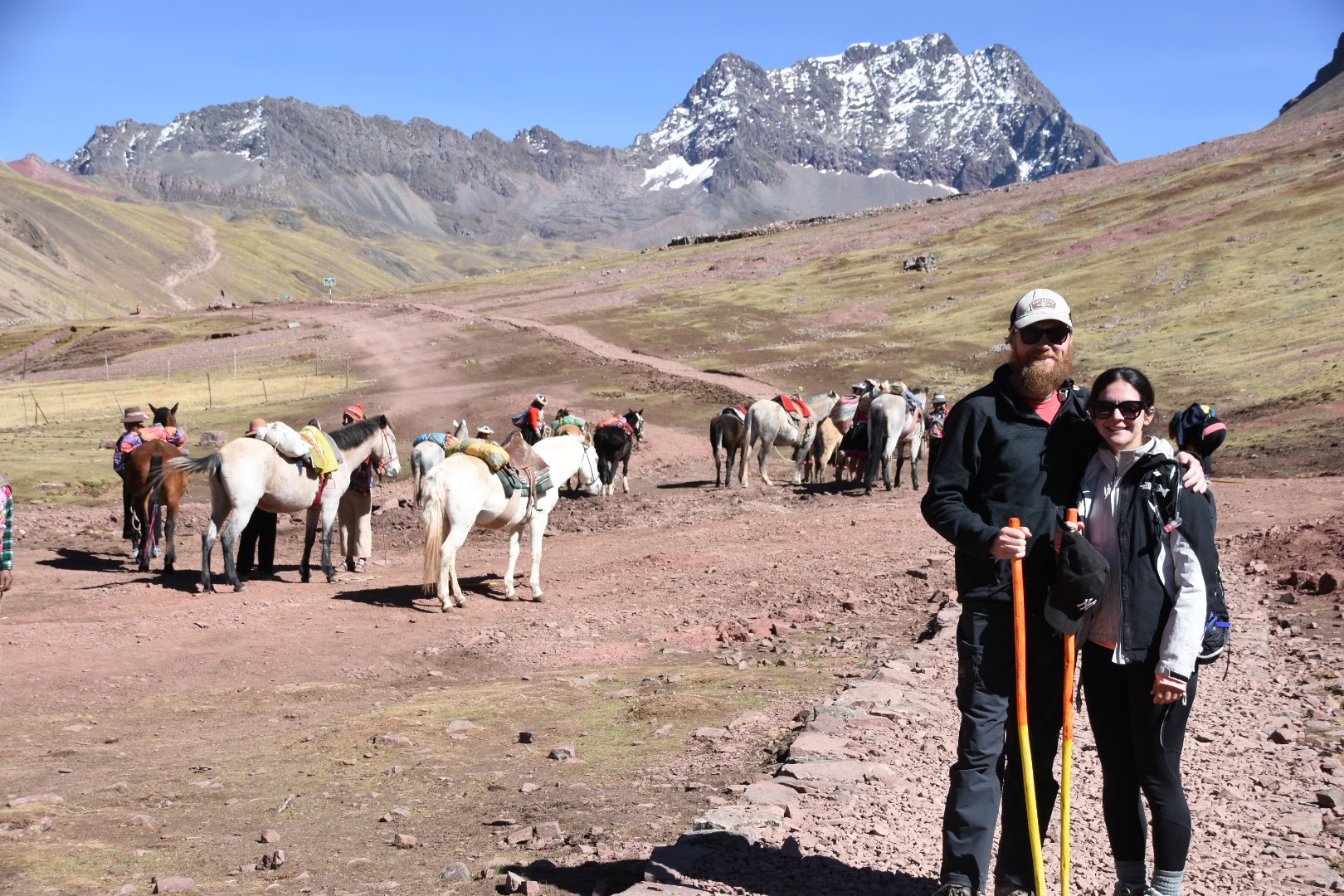
The hike starts out fairly gradual but eventually the hard work kicks in with the most difficult part right at the end. Once up top though the views are fairly unique with the different minerals on the mountain creating the unique rainbow effect.
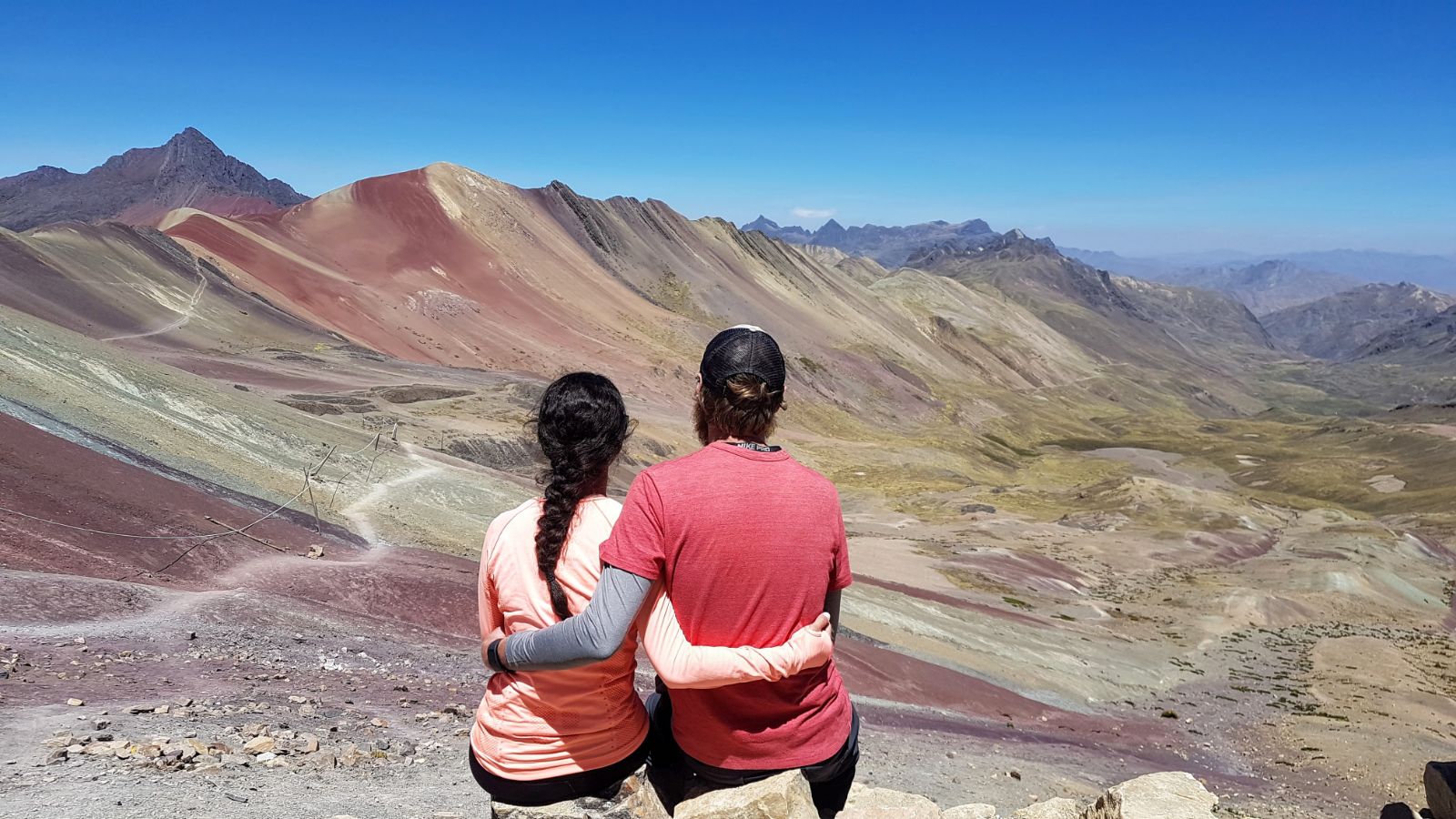
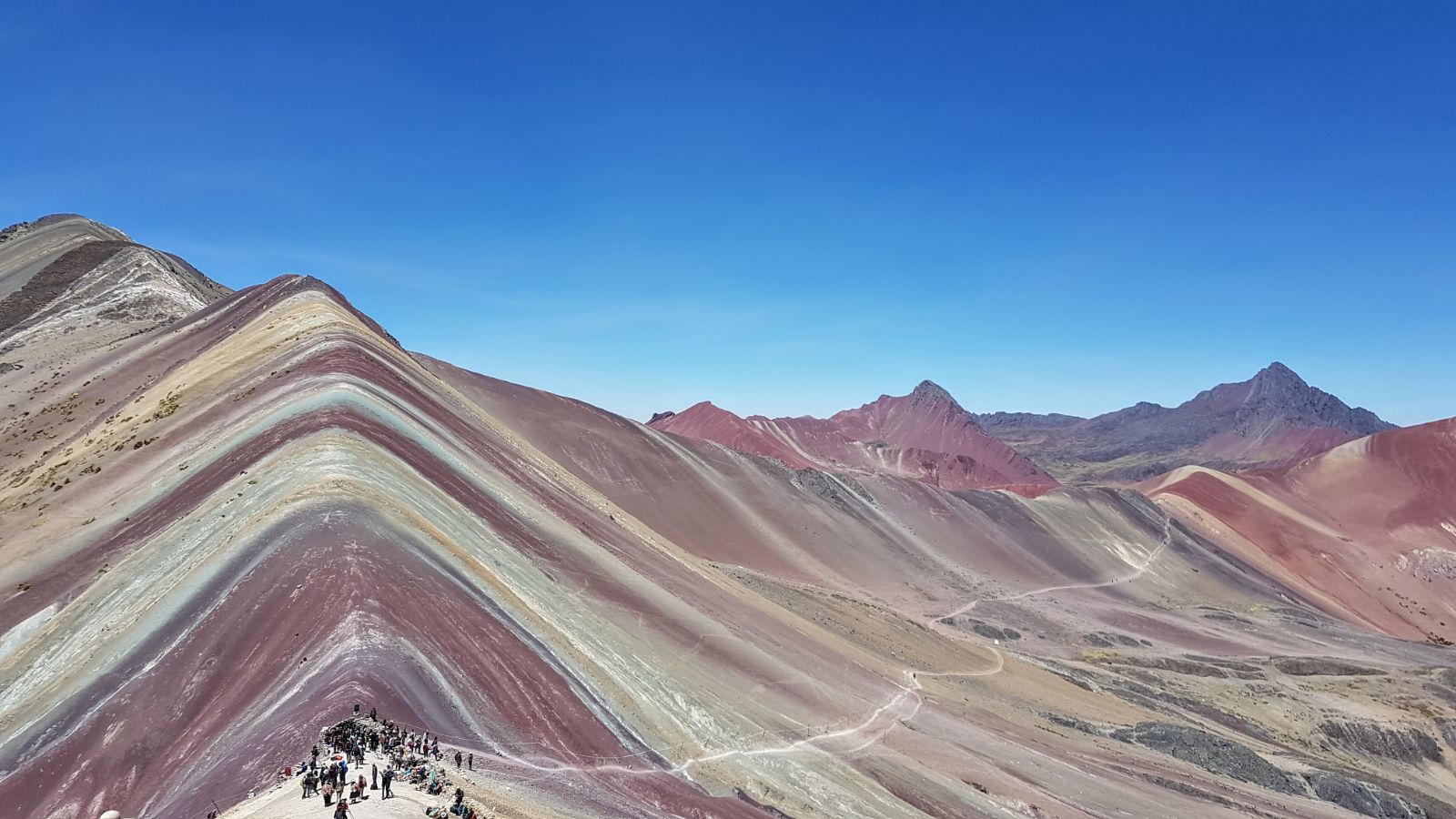
Most tours turn back around and hike back down the mountain the way they came. We specifically chose one of the only tour companies that hikes around the mountain through the red valley. Whilst the rainbow mountain is most people’s highlight we really loved the extra hike through the valley and found it to be one of the most stunning landscapes we’ve ever seen. The countless alpacas and llamas along the route also helped keep us entertained.
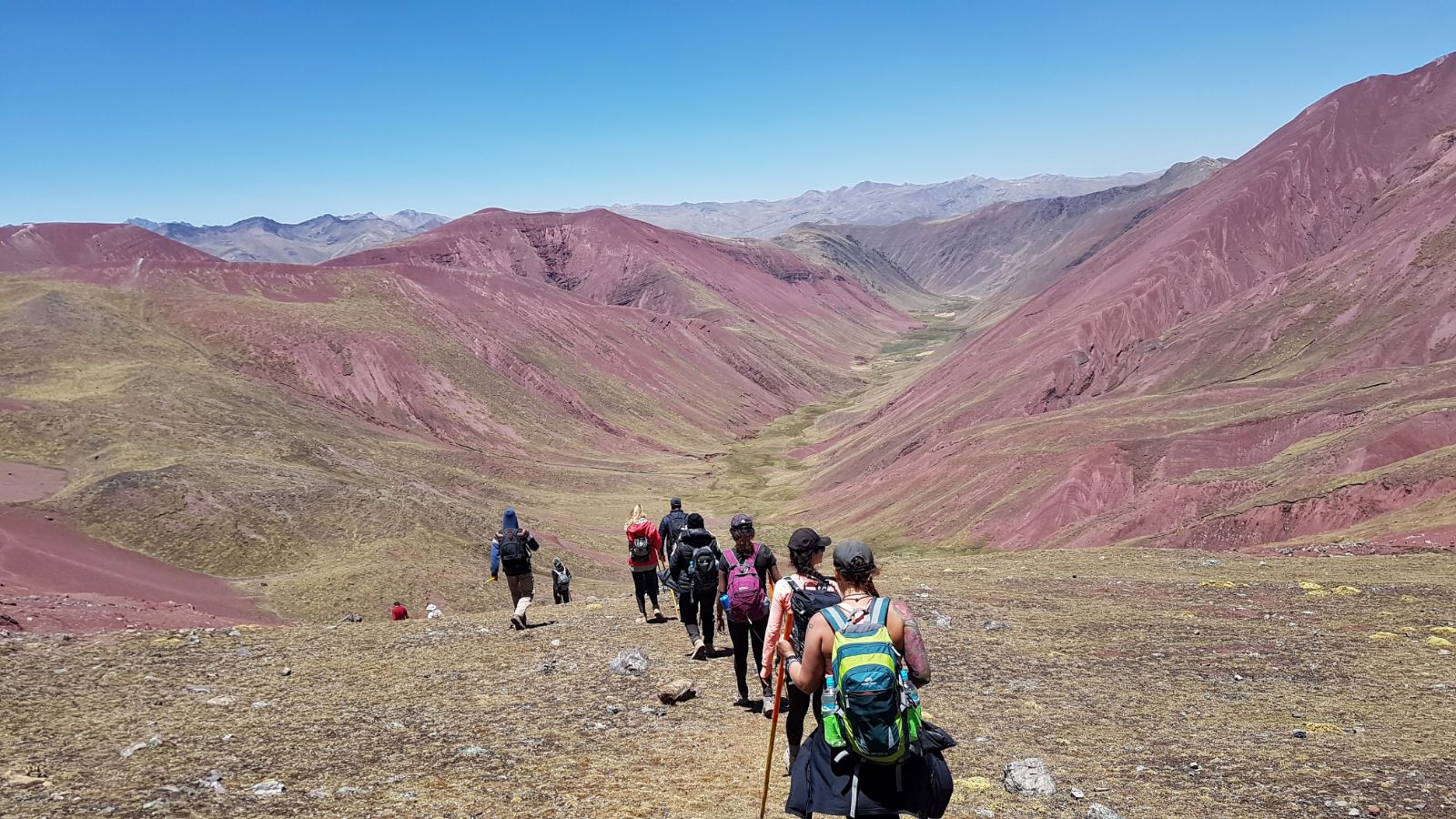
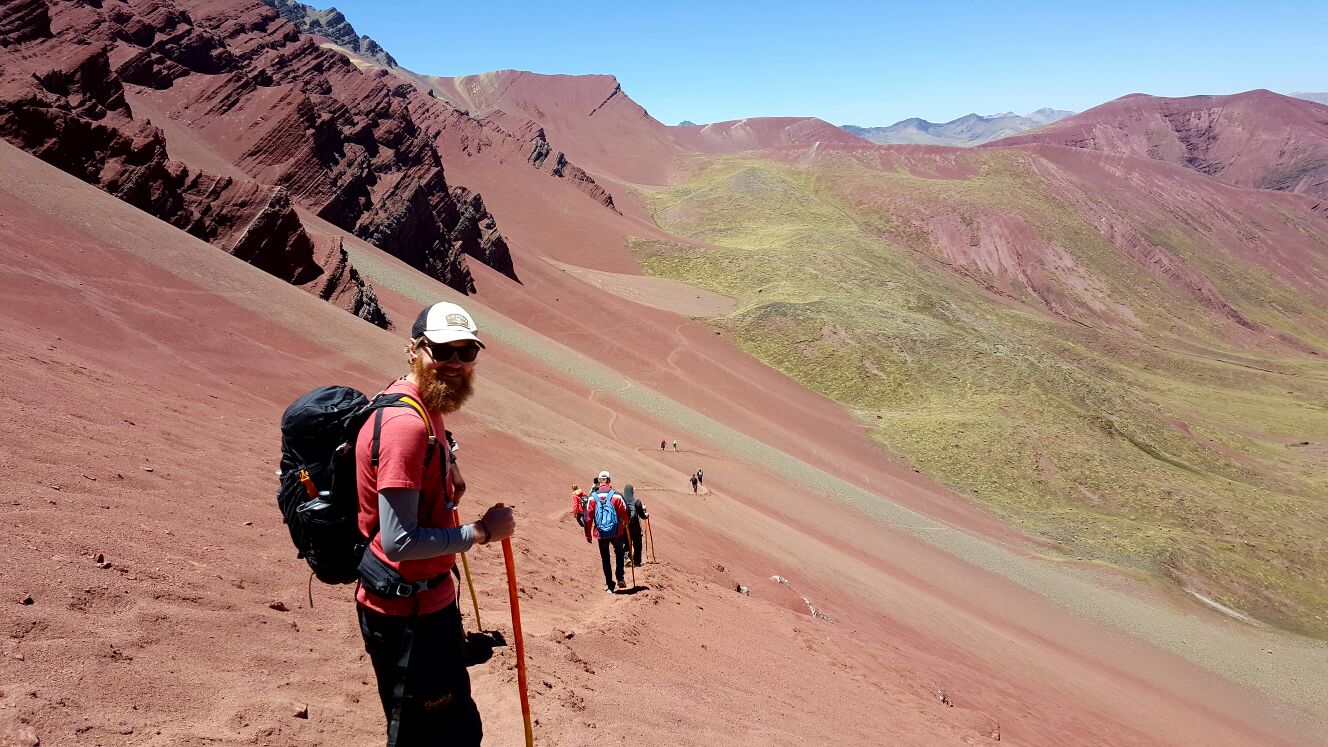
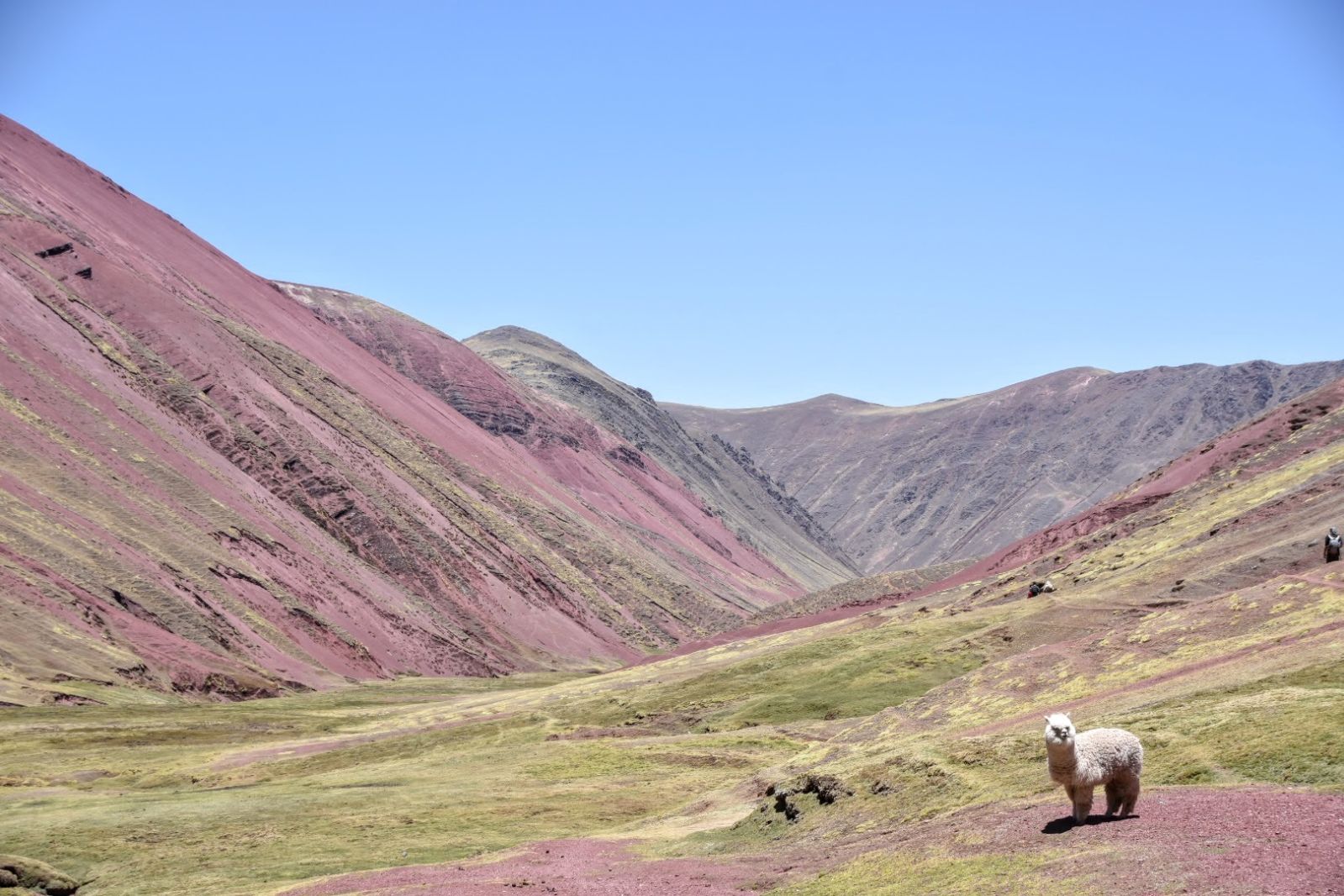
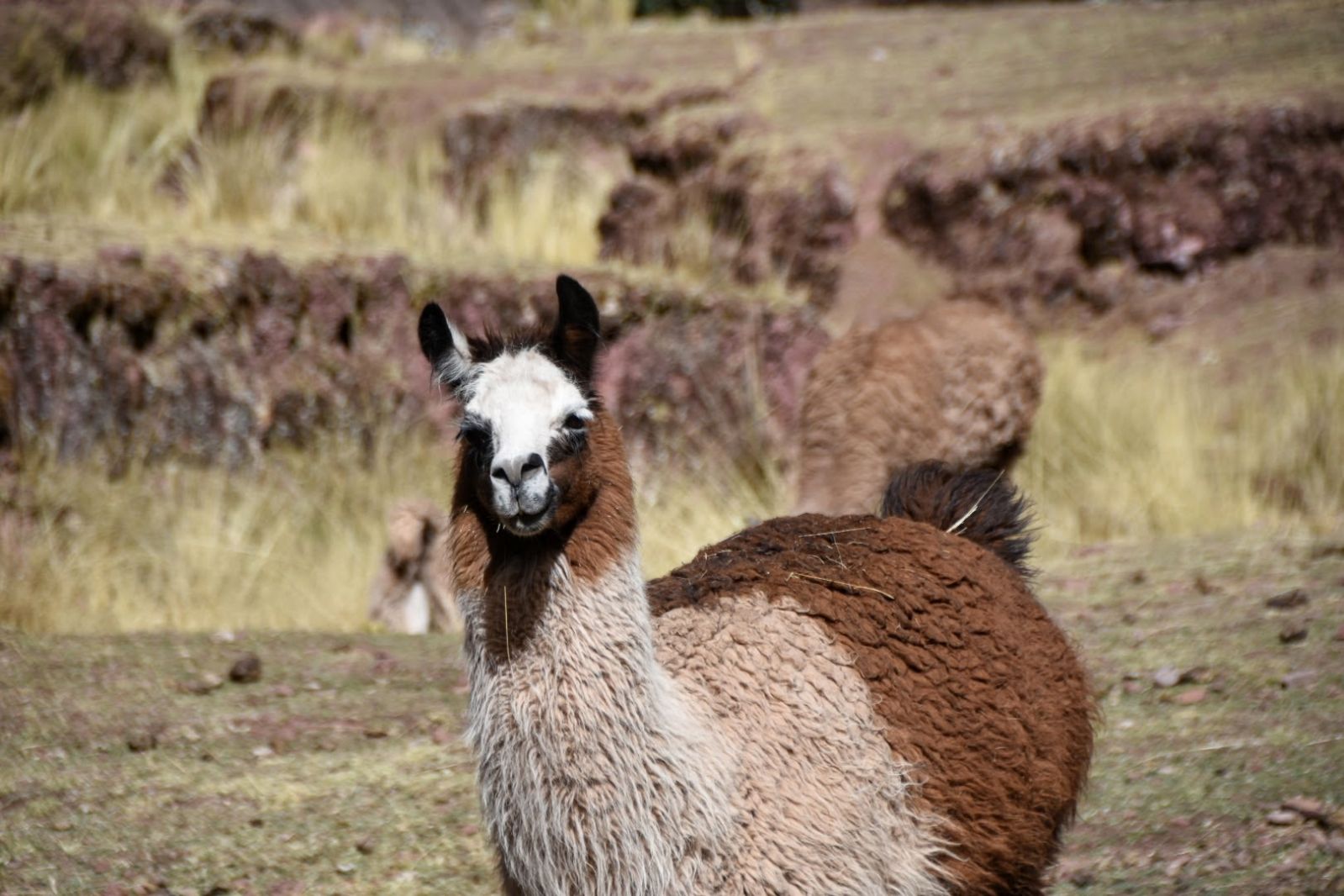

The tour company we used Inka Time were a mixed bag. The food and the actual tour were great but our tour guides were poor and when not barking instructions at the slowest members of the group to hurry up the guides literally ran an hour ahead and left people in our group on their own in the valley. I had to lecture them on their responsibilities which was a bit stupid as it turned that a few people in our group needed to take oxygen and one person even required an emergency horse. I’m reluctant to recommend this company but highly recommend doing the red valley and am not aware of other companies that offer this so maybe go with it but stick with a buddy!
The Classic Inca Trail is a 4 day / 3 night hike through the mountains to Machu Picchu following the route taken 500 years ago. A great multi day hike needs four things: a challenging trek with interesting scenery and a big ticket item at the end to keep you motivated; a well organised tour company with a switched on guide; decent weather; and perhaps most importantly, a group that you get along with to share the journey. Our Inca Trail scored a perfect 4/4!

The journey started with another early 3:30am pick up from Cusco and a few hours’ drive to the trail start. After breakfast the porters set off with 25kg each on their back and charged ahead while we had a fairly easy six hours of “Peruvian flat” (really not that flat) hiking.
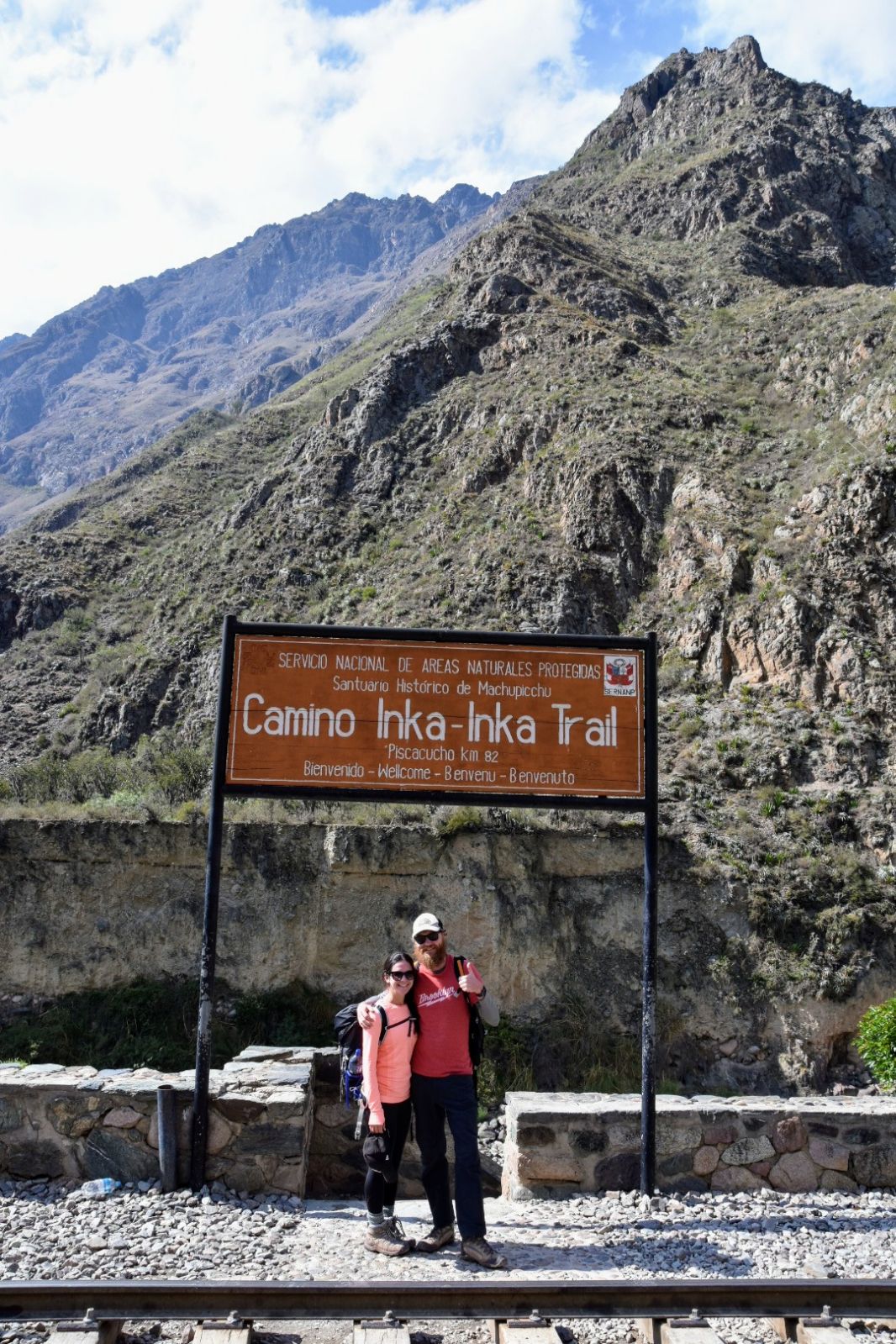

The second day is the famously difficult day of the Inca Trail and starts with an early breakfast followed by a few hours of steep climbing to the first and highest mountain pass – the dead woman’s pass – at approx 4,215m. I was feeling particularly energised and managed to complete what was meant to be a two hour climb in about 40 minutes mostly thanks to (a) plenty of warm up hikes, (b) mate de coca, and (c) good banter with an American guy named Ryan in our group who charged up with me. Jen was only a few minutes behind but after following her all the way up Colca Canyon this felt like a win!


Day two had about 10 hours of hiking time but with a few breaks including to check out some archaeological sites. We stopped at a number of sites throughout the hike.
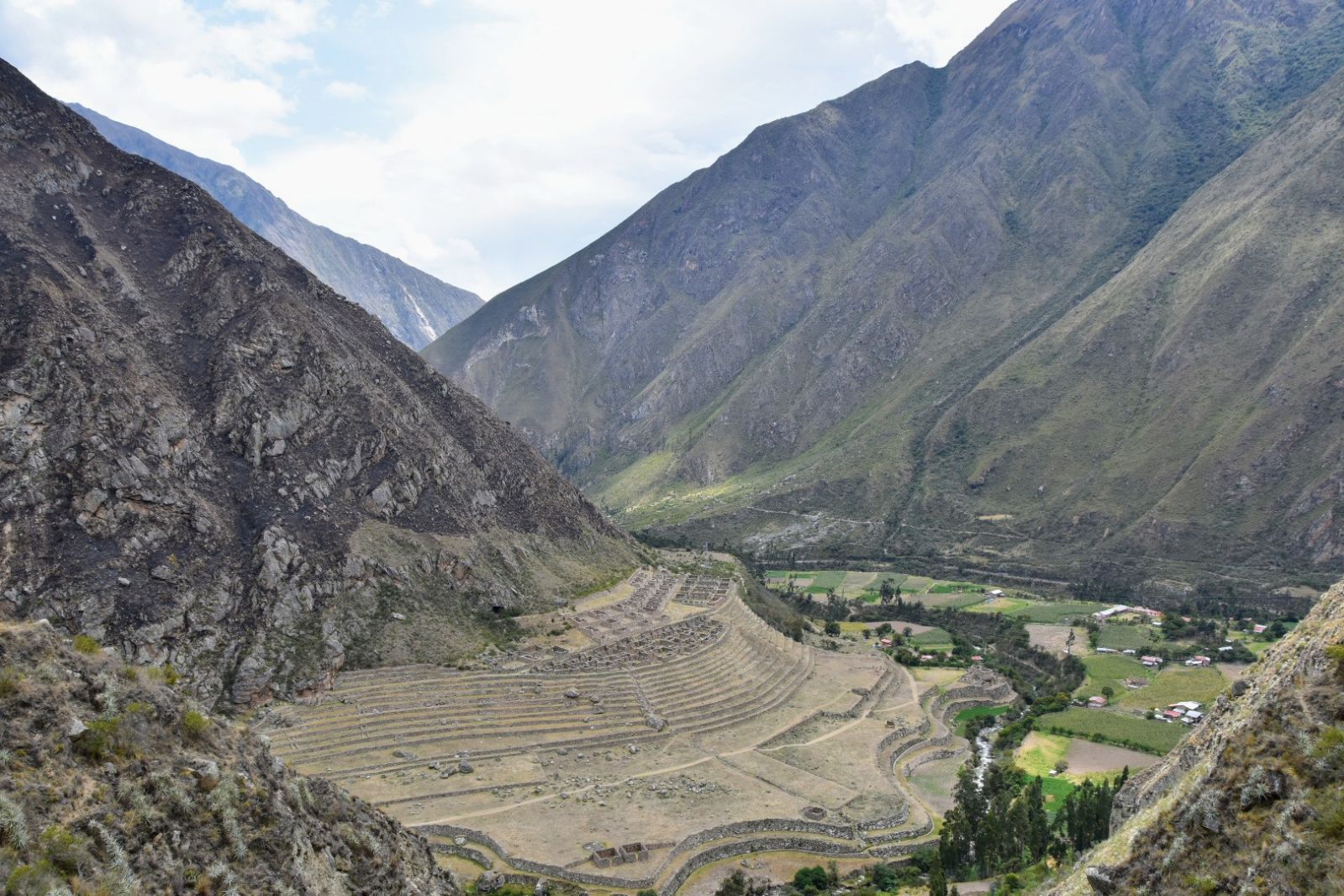
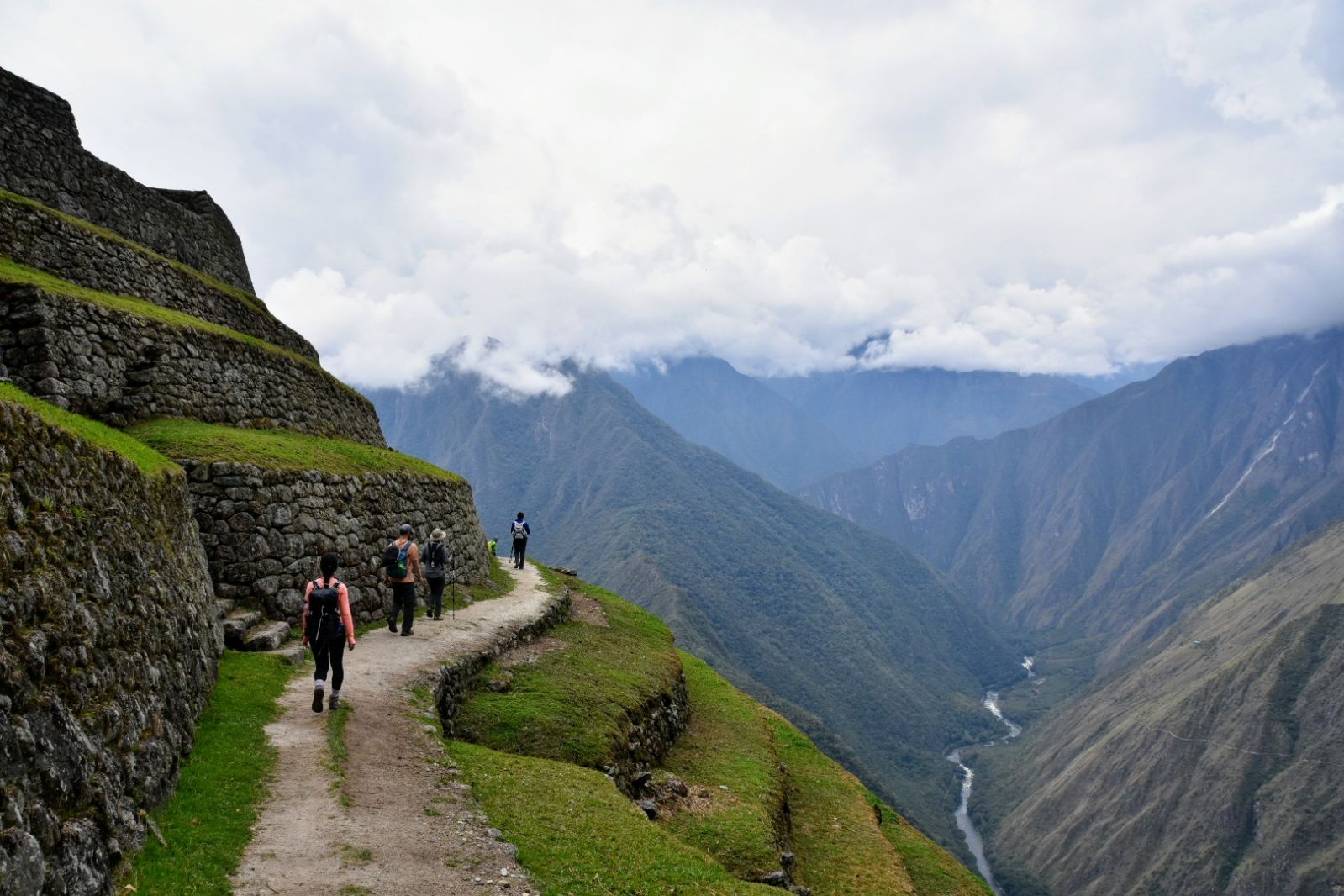
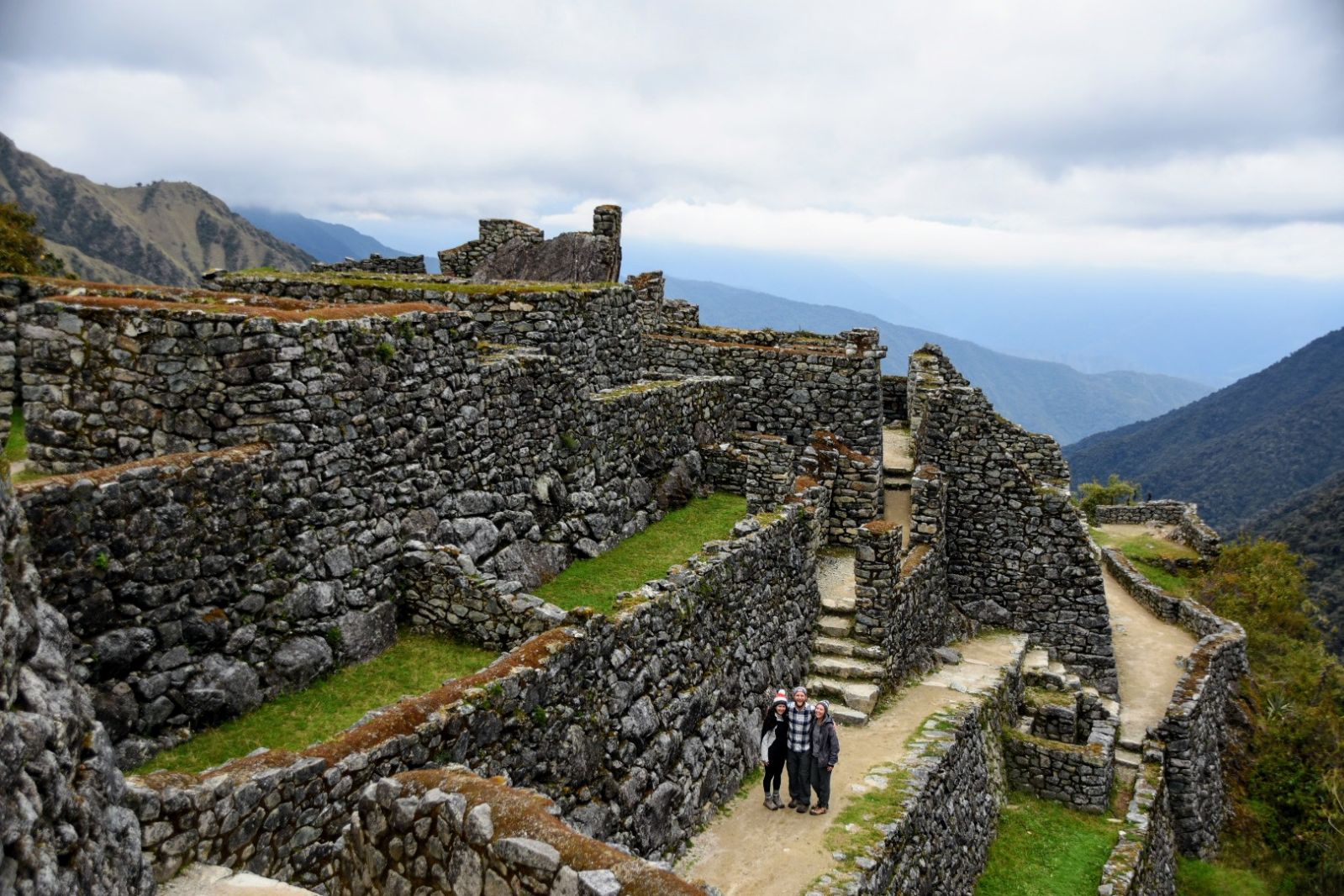
On the third day we only had a few steep climbs and after six or so hours of easy hiking we got relax at the camp site and be fresh for the final day. It also allowed us to explore Wiñay Huayna, also known as mini Machu Picchu, with almost no one else around. This is only possible when doing the Inca Trail and another of the bonus archaeological sites we got to see and learn about on route.
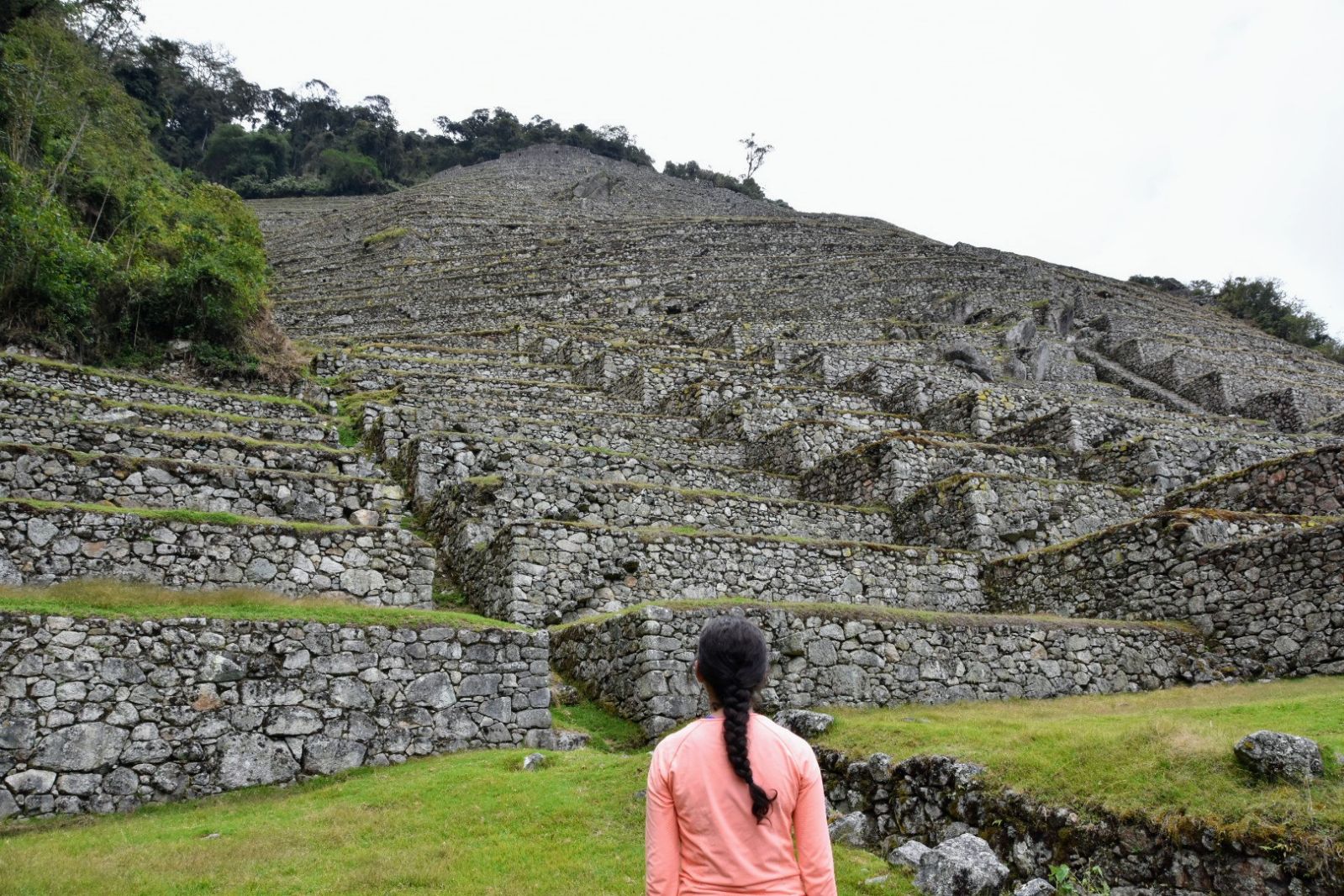
The fourth morning started at 3am with a five minute dash from the camp site to the entrance gate for Machu Picchu. The gate doesn’t open until 5:30am but groups line up to get in and – as we found out – the serenity of seeing very few people on the Inca Trail ends quickly once you arrive at Machu Picchu so being at the front helps a lot. Once though the entrance it was a couple of hours hike to the Sun Gate from where we had our first glimpse of Machu Picchu. We were lucky with the weather although clouds rolled in and at one point Machu Picchu completely disappeared she revealed herself again not long after.
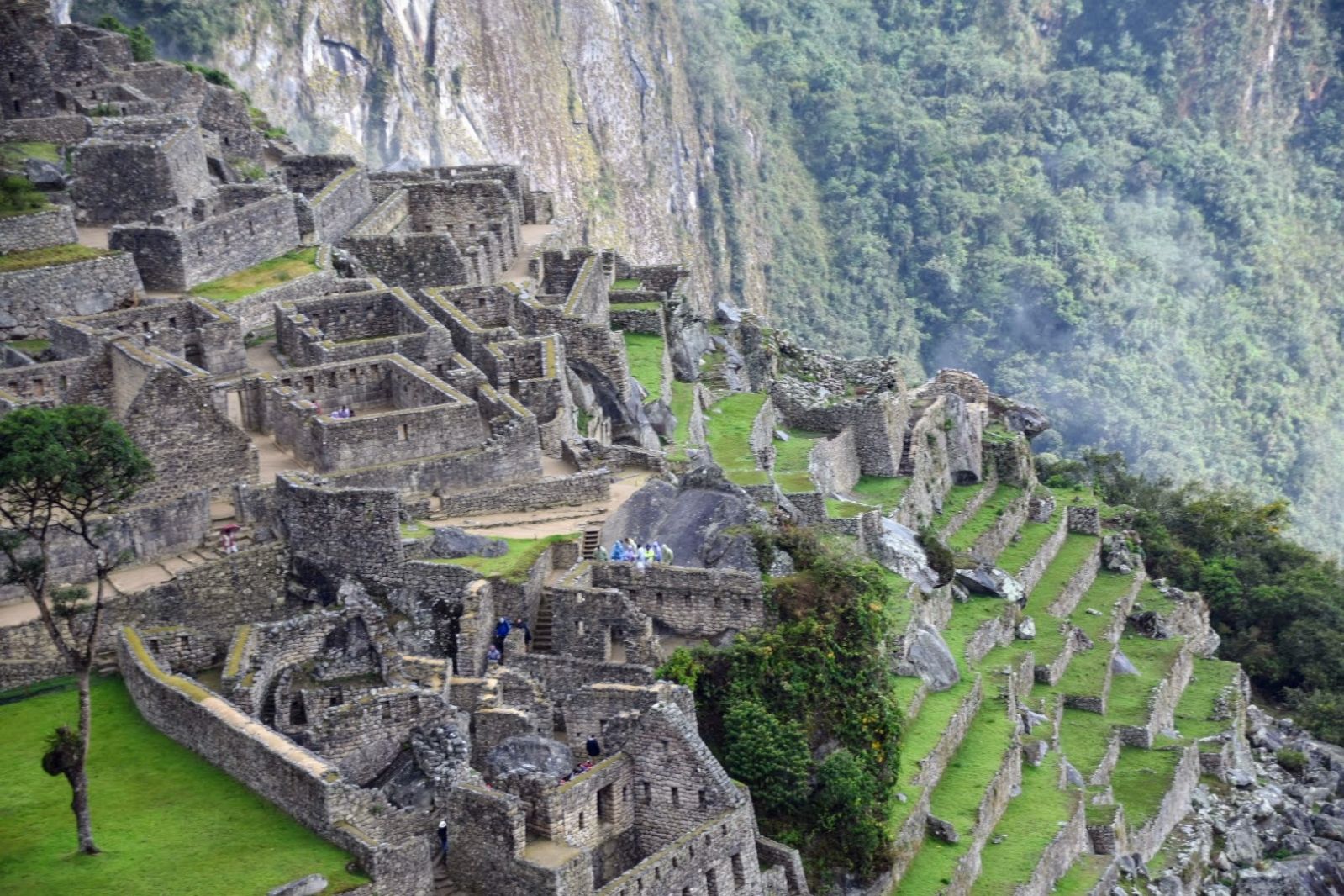
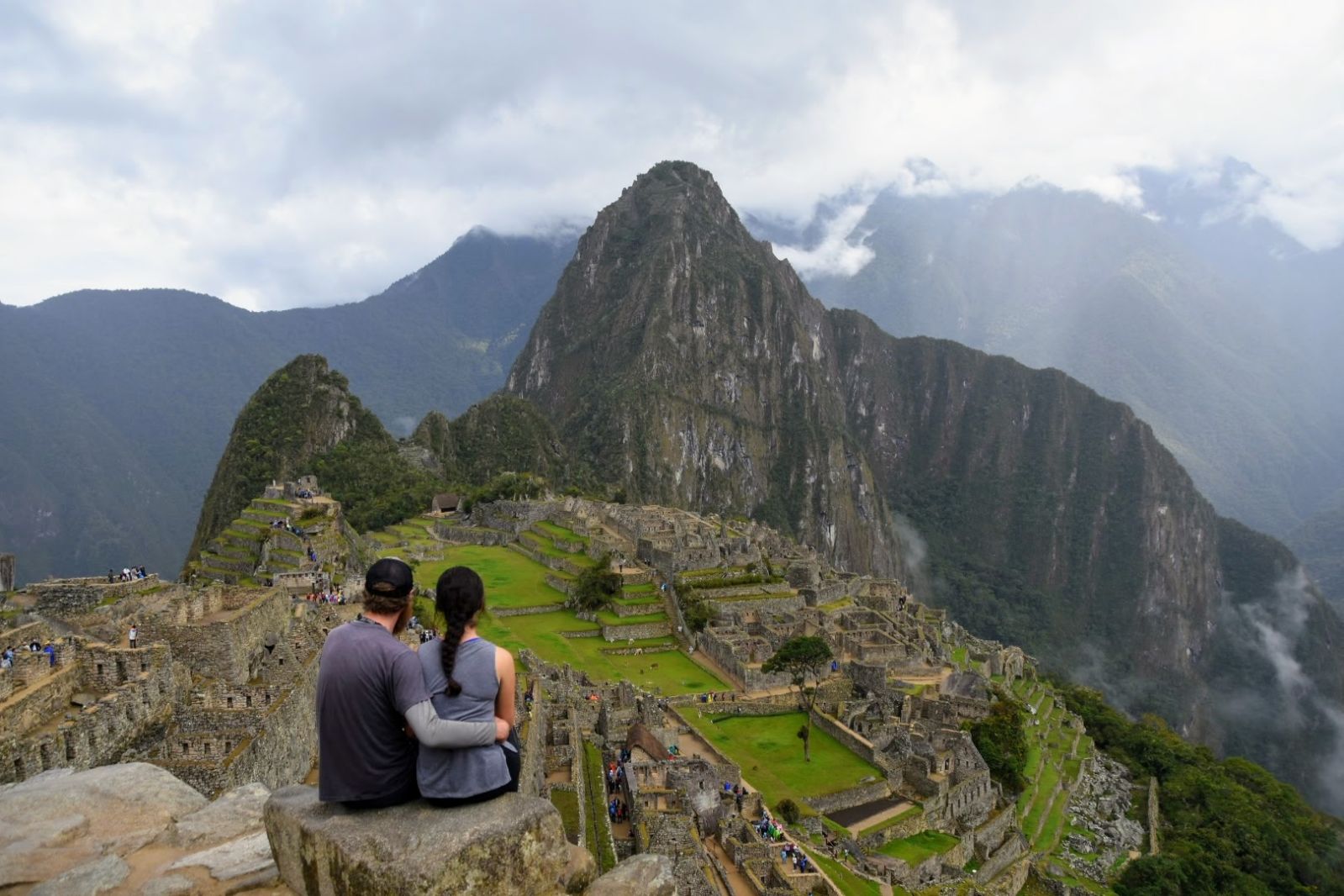


We had a couple of hours learning about Machu Picchu as we walked around the site before Jen and I (and two others in our group) broke away to do an extra climb up Huayna Picchu – the tall mountain you see in the background of every Machu Picchu photo. After four days of hiking we did question why we booked another gruelling climb straight up a mountain but it was well worth it. Climbing Huayna Picchu only takes an hour or so each way but the steps are smaller and at times near the top it is definitely a little more adventurous than most climbs. I’m pretty sure in Australia or the UK this would be banned on safety grounds. We survived and got a great view of Machu Picchu to take even more photos!
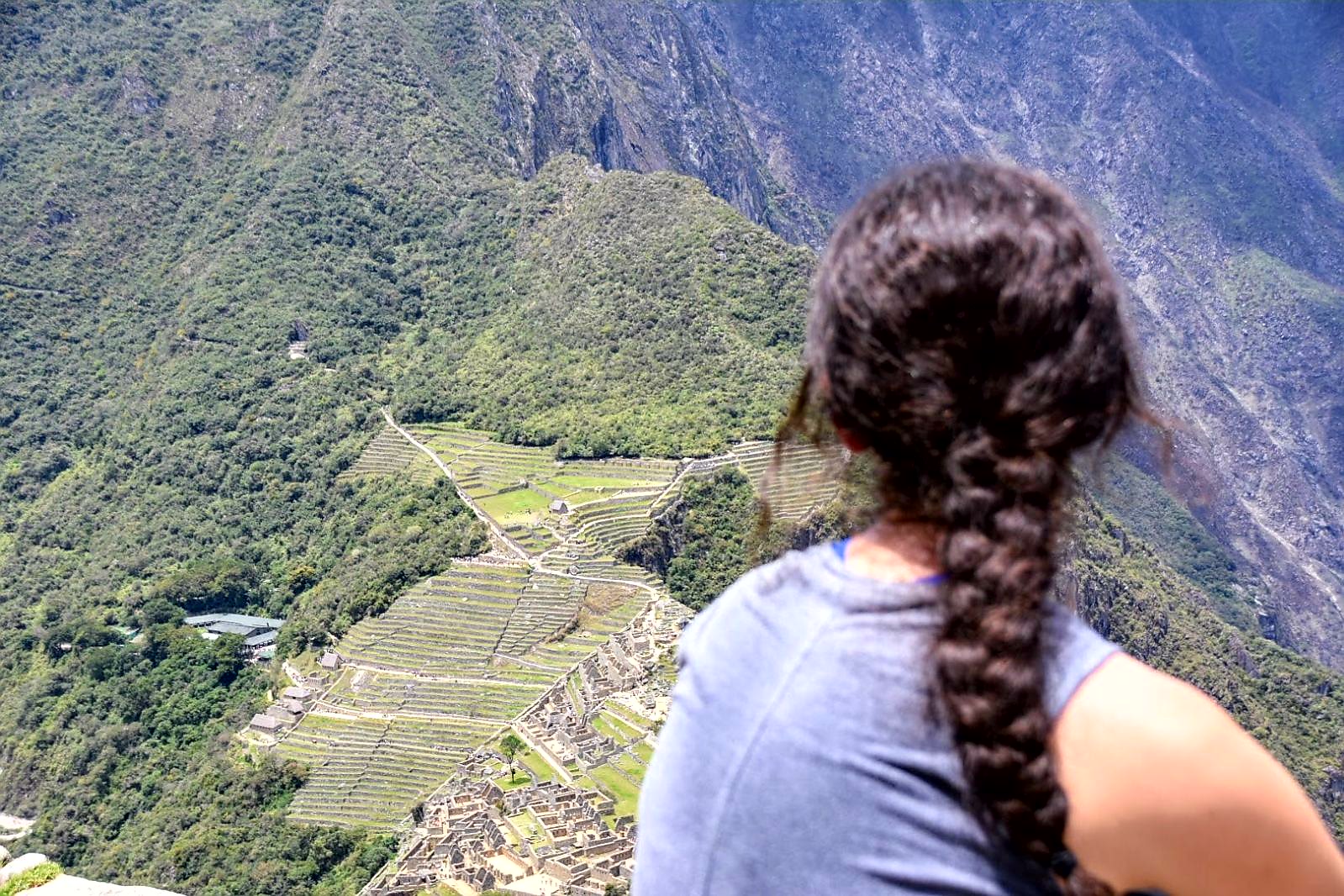
After significant research we selected Alpaca Expeditions for the Inca Trail. They were outstanding! Our group of seven was supported by 11 porters who carried everything across the mountains, a chef and sous chef who prepared delicious three course meals at each campsite (even baking a cake for our last meal) and the best tour guide we’ve come across – Primo – who entertained and educated us for four days. At about $700 each this hike is a budget killer but for a once in a life time opportunity to see a wonder of the world it was well worth it!
Cusco itself is a vibrant, picturesque city where you need to allow a few days to wander the streets, explore the little alleyways and markets, do some day trips and leave plenty of time for eating and drinking. There are several free walking tours to help get acquainted with the city and learn about the fascinating history of the Incas. We really liked the Free Tours by Foot whose excellent guide covered a lot in the three hour tour.
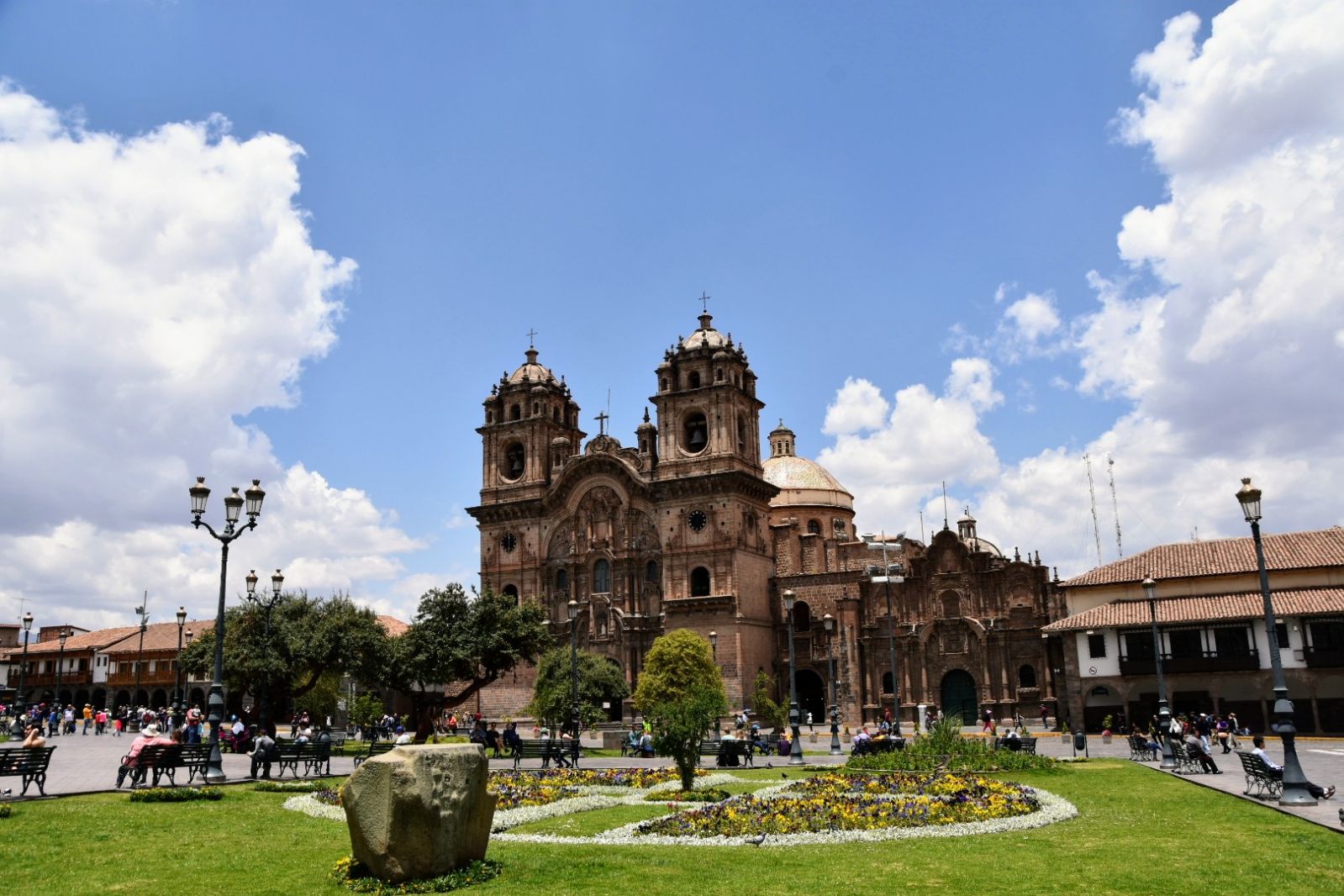

As with other South American cities there always seemed to be something on – a pop up art market, massive gatherings to watch a football match in the plaza or a huge parade usually celebrating something we didn’t know about!
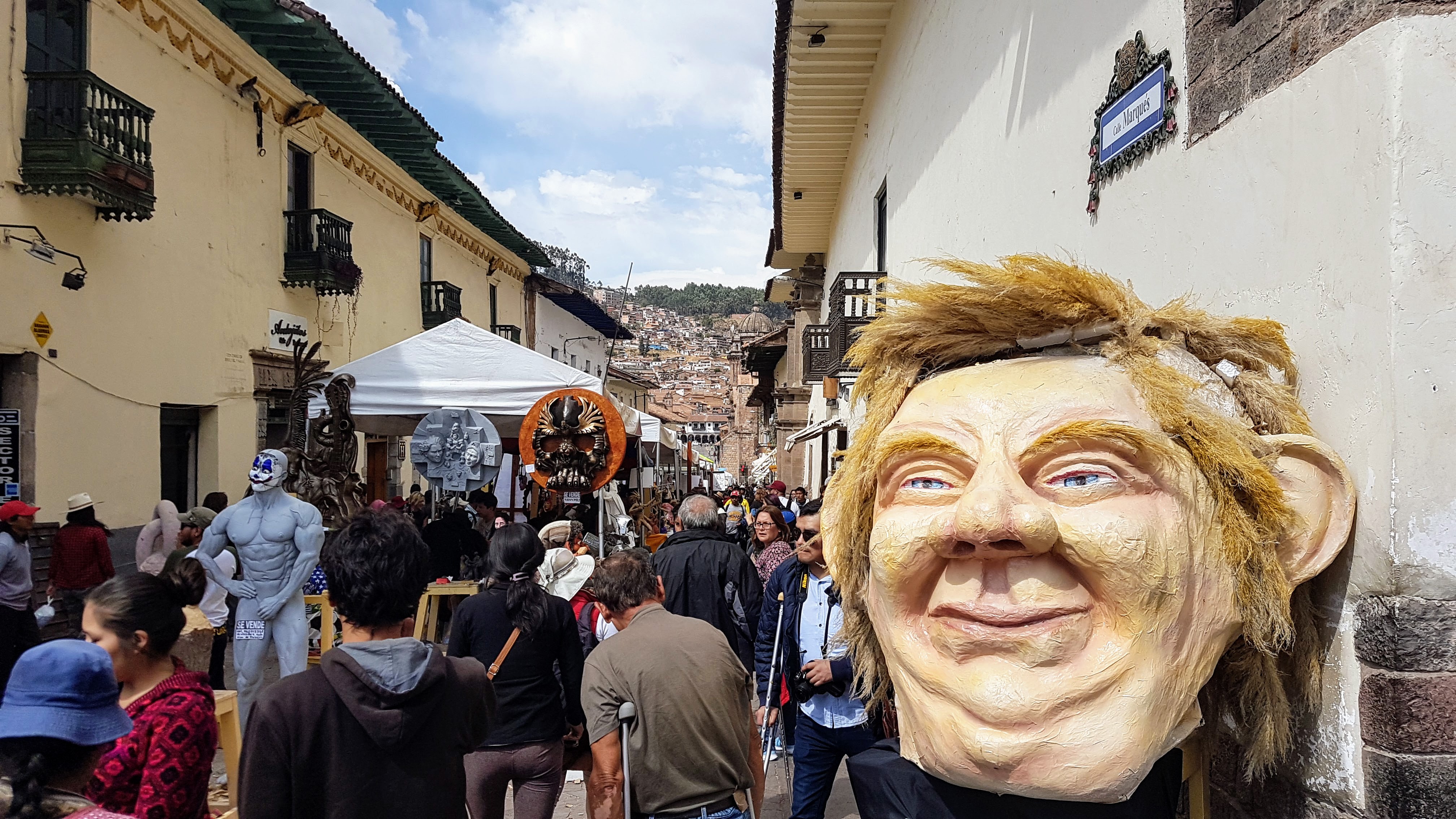
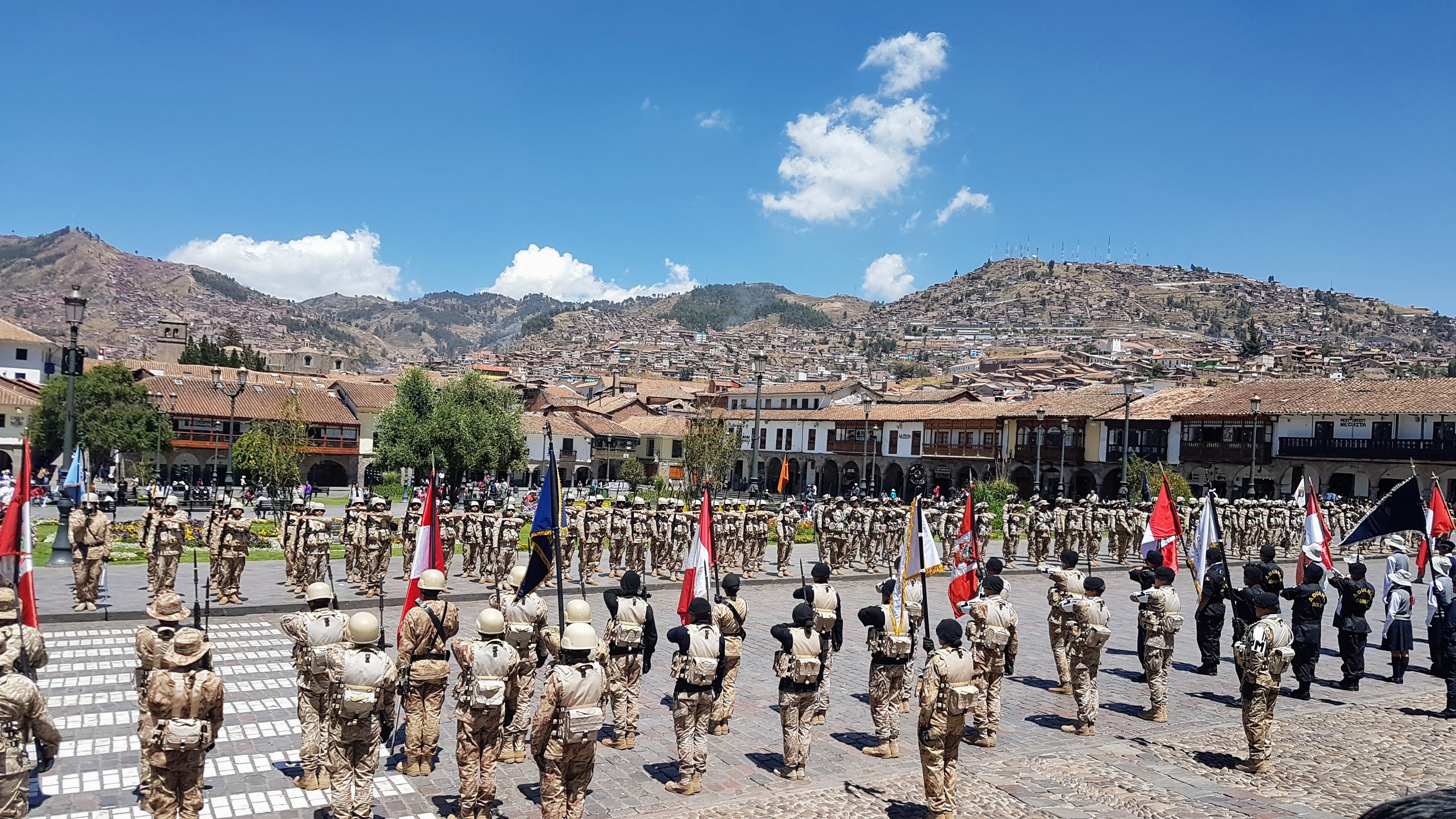
The huge San Pedro Market has a large number of food stalls as well as handicrafts, clothes and the usual South American market fresh juice stalls.
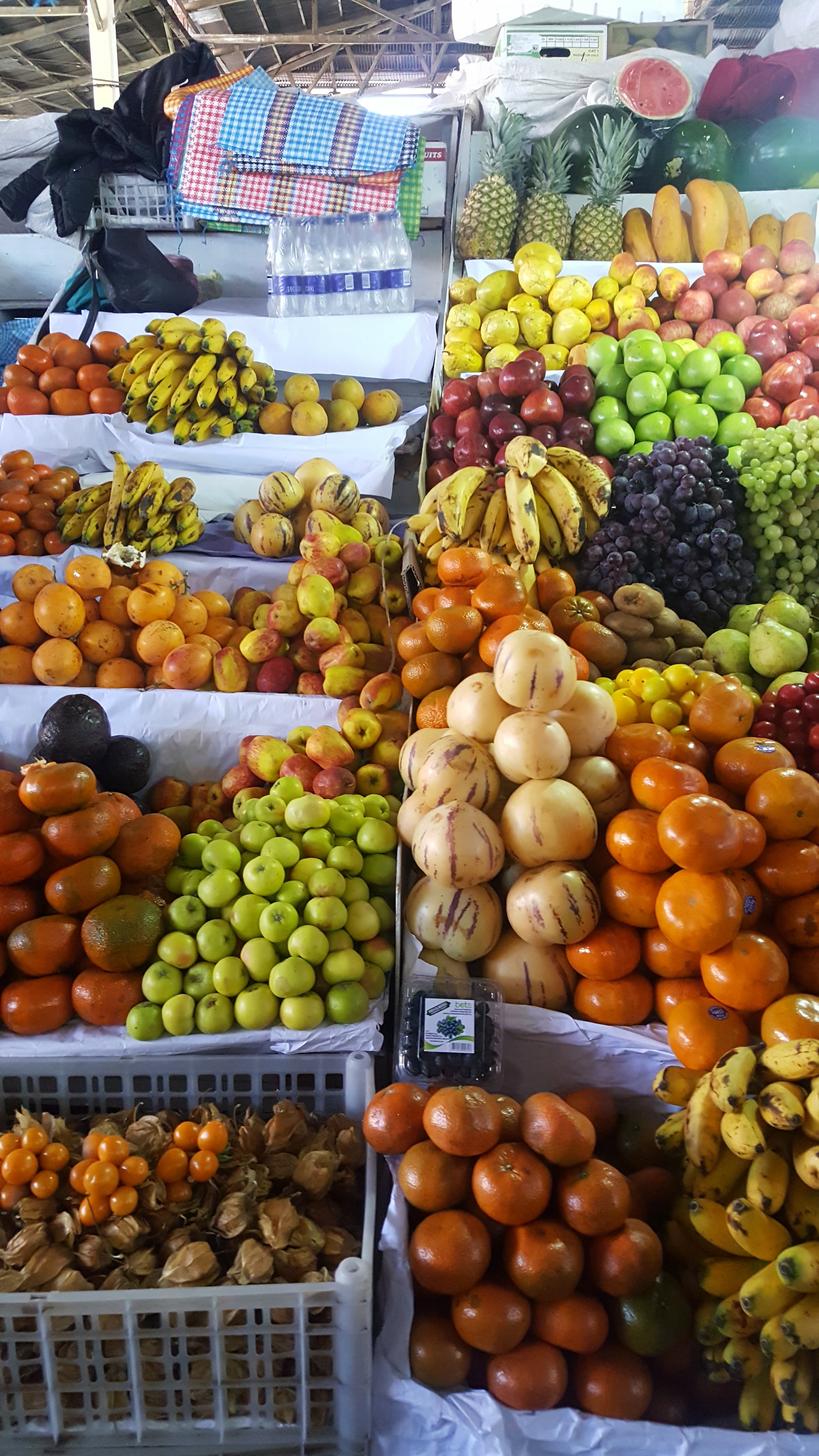
We were lucky with our timing in Cusco and got to meet up again with Krystal and with most of the crew from our Santa Cruz hike. Cusco is definitely a city that has plenty of nightlife for those who want it but with all of our hiking we mostly kept to and socialised in civilised hours ;-).
There are hundreds of options for eating and drinking in Cusco. We were remarkably loyal to a few chosen places during out time and had repeated visits to our favourites:
- Jacks Cafe is certainly not a hidden secret in Cusco and at first glimpse is a bog standard tourist joint serving western food at pretty expensive (by local standards) prices. It also has fairly average coffee and surprisingly no wifi. However… we went there four times! The portions at Jacks are huge (most can be shared) and the food is really tasty. After 10 months travelling this place certainly offered home comfort and fueled up our bodies with some healthier food for all our hiking.
- Organika and sister restaurant Rucula that serve really tasty organic home made pastas. Portions are small and prices moderely high but the quality (and presentation) was great.
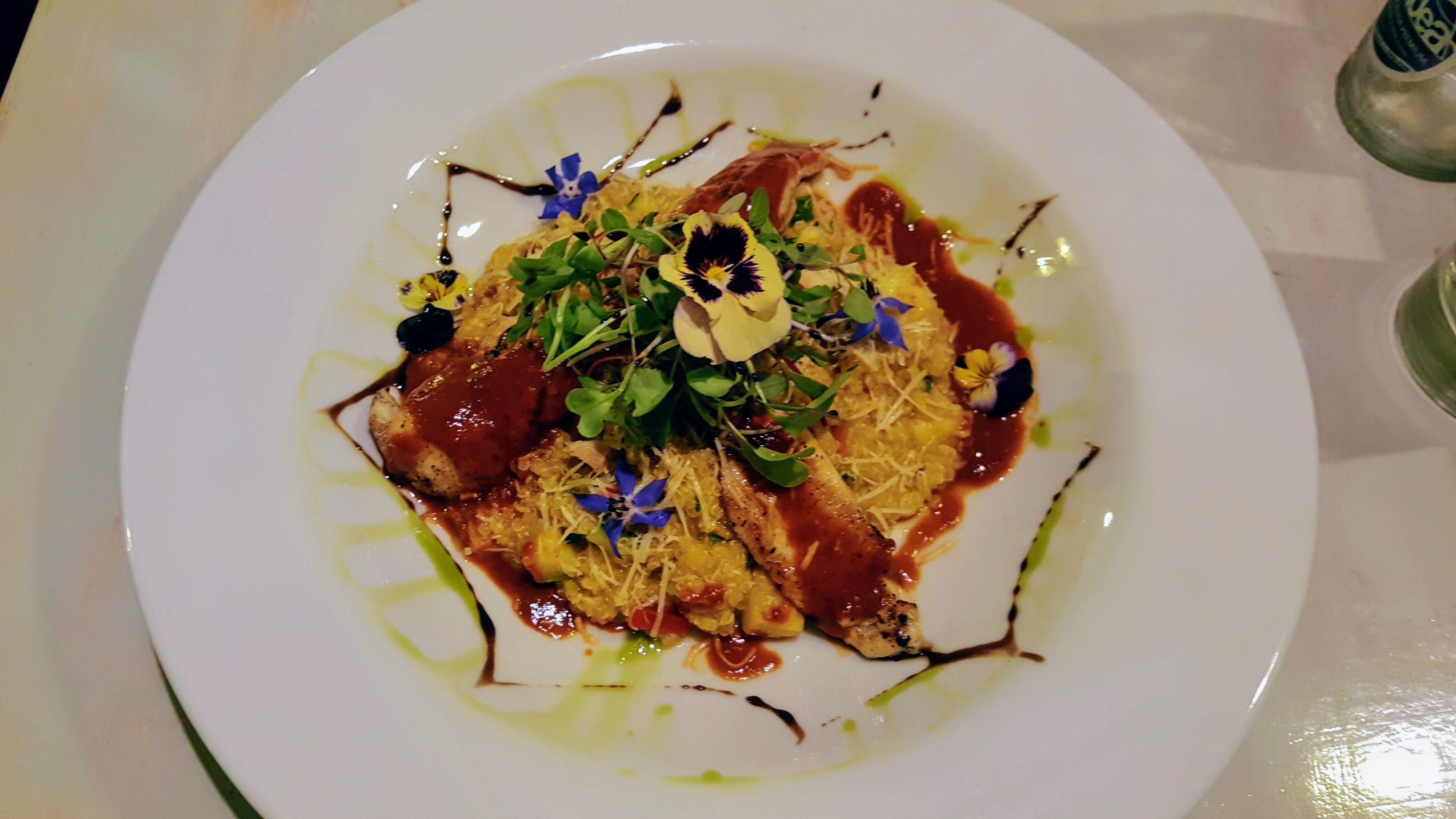
- I’m certainly no vegan but we loved (and again visited multiple times) Green Point in San Blas – a strictly vegan restaurant that has an incredible 15 Soles (less than $5) four course set lunch deal with food so tasty it does make you forgot about meat for a while.
- Continuing the healthy options, we also had repeat visits to Qura cafe in San Blas. They have amazing açai bowls (even better than the ones we had in Brazil), awesome smoothies and a very generous avocado on toast.
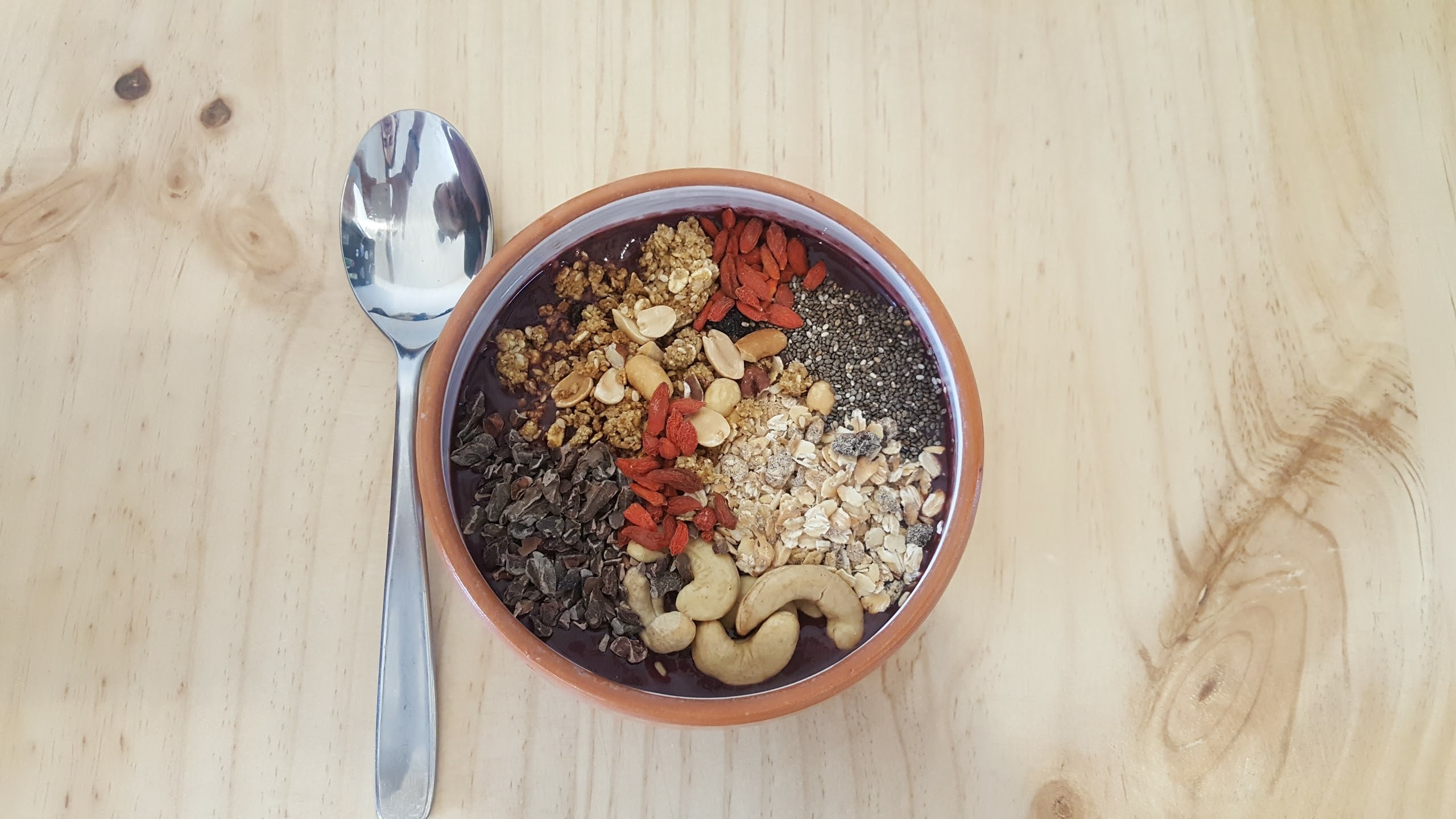
- A small, local family owned organic coffee shop called Cafe Ricchary that was recommended by our hostal. The cafe only has two tables but arguably the best coffee we’ve had in Peru. The beans are grown and roasted a few hours outside of Cusco. They also have homemade chocolates with little coffee beans inside (they grow the cocoa also). We went there four times and it never disappointed!
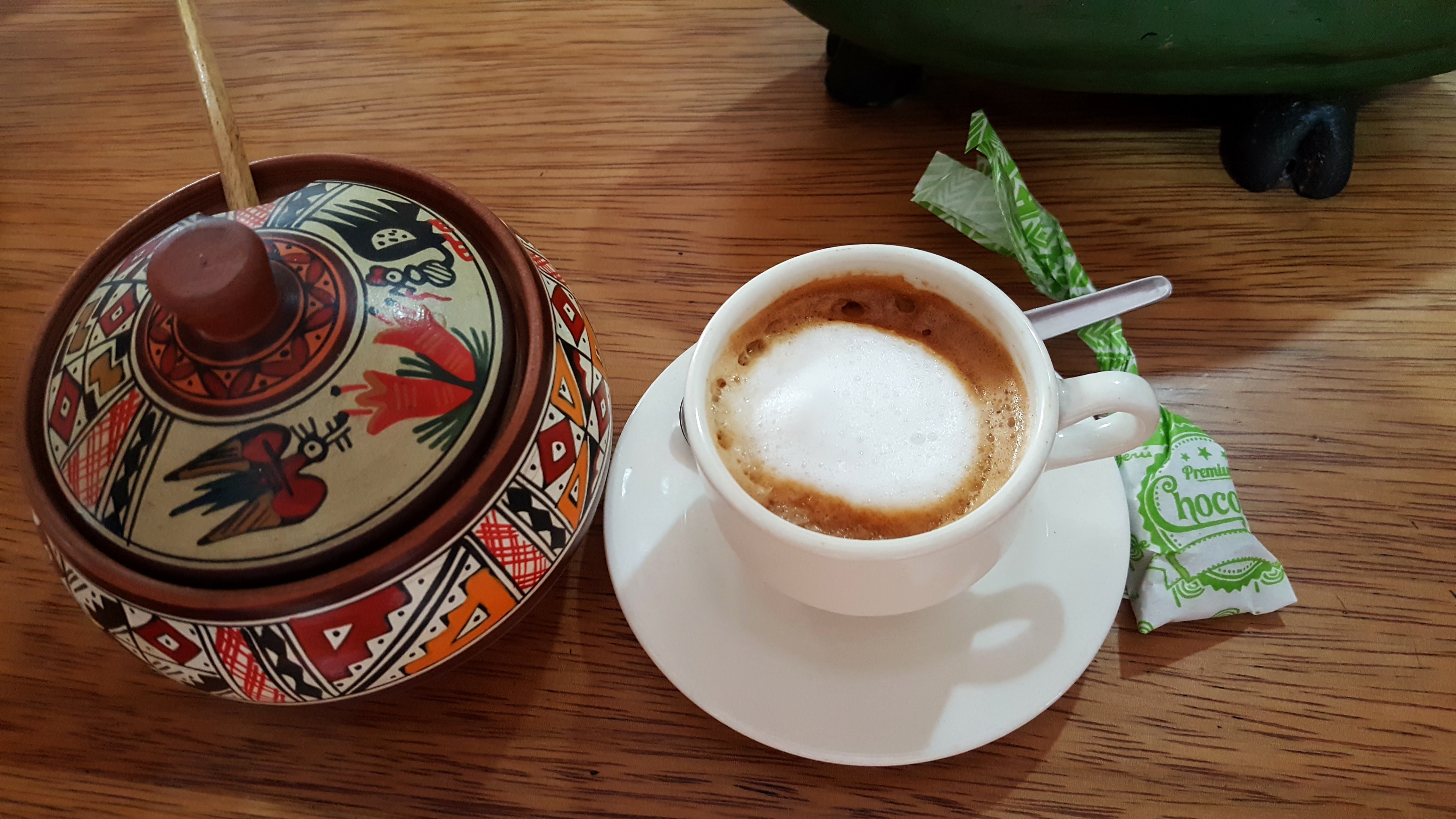
- Another great coffee options is L’atelier Cafe Concept in San Blas that serves good (though not quite as good as Ricchary) coffee on their little balcony. Tge cafe is combined with a boutique clothing / accessories store.
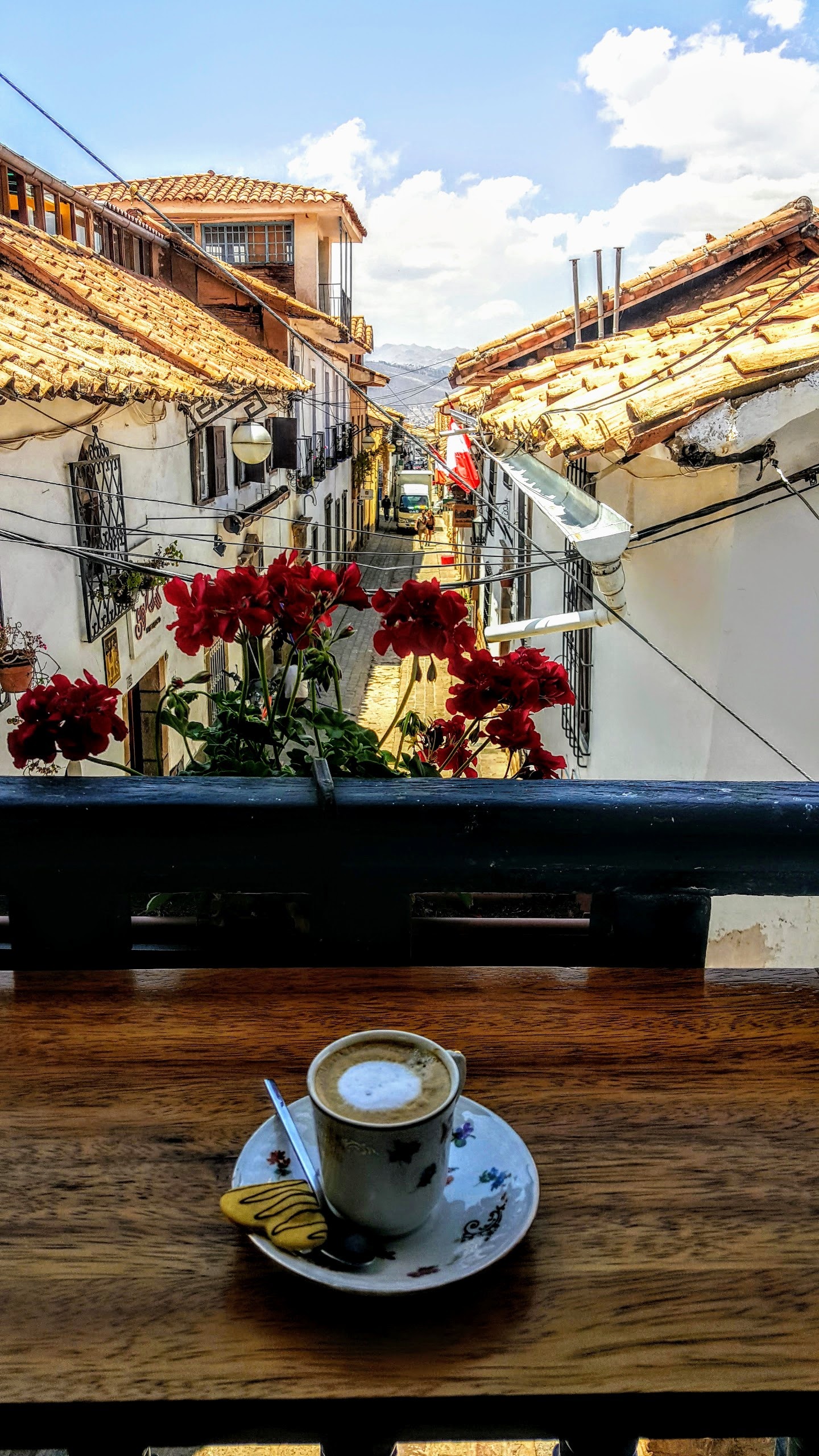
Accommodation in Cusco
We spent our first few nights in Cusco at a fairly centrally located hostel – Magicpackers – near the San Pedro market. We arrived early morning from the night bus and were immediately unimpressed with the indifferent attitude of what I assume is the night time receptionist. Staff and (I think) their family members were having overly loud conversations at 6am that I was sure would have woken everyone up. First impressions aside (and at times stinky shared toilets ignored) it was an adequate hostel offering better value than others in Cusco and we actually slept well.
For our other five nights pre and post the Inca Trail we moved further out of town to the family run Dreams House Hostal where a private room with bathroom was only marginally more expensive than Magicpackers but the hospitality, room comfort and breakfast were world’s above. The super friendly and chatty owners put hot water bottles at the foot of the bed each night – even though it wasn’t that cold when we were there it was a very homely touch! We really recommend this hostel if you don’t mind a 20 minute walk to town (or like we often did – a $2 uber).

Next up: we end our hiking for now and have two nights in Lima before reluctantly saying goodbye to Peru.
